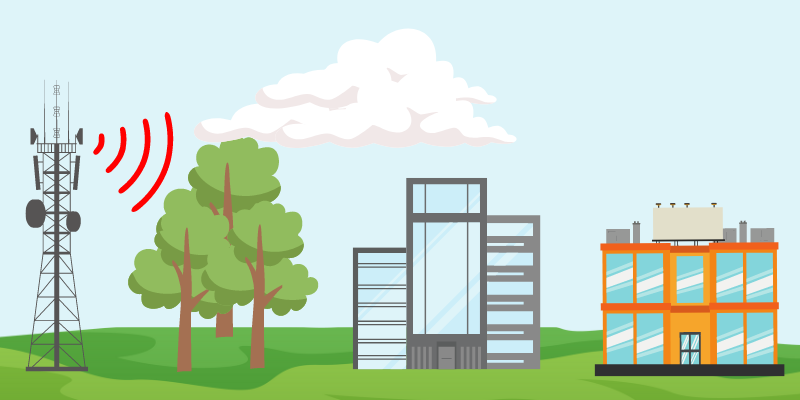By: Adam Baer, Director of IT Services
Have you noticed yourself having a stray thought here or there about how cell phone service seems worse than it was a few years ago?
You’re not crazy.
The much-anticipated 5G rollout has proven much more complicated than expected for the three major wireless carriers: Verizon, T-Mobile, and AT&T, resulting in network performance issues that have drawn coverage in local news stories and even national media. Calls drop more frequently, data is less reliable, and – as you’ve no doubt noticed – business is often disrupted.
Fortunately, there is a technological solution available in Cellular DAS, which provides crystal clear, high-speed connectivity in buildings or areas that would otherwise have poor coverage. Want to learn more about why this problem exists and whether a DAS solution makes sense for your business? Stick with me, and we’ll break it down.
Higher Speeds and Limited Spectrum: A Complex Problem, and How it Affects You
Think back to some of the promises that accompanied early discussions about 5G back in the mid-to-late 2010s. This wouldn’t merely be a slightly faster version of your current wireless network – it could be as much as 10x faster, and do so much more on top of that. It would enable things like fully autonomous cars, immersive virtual reality, widely available robot-powered remote surgery; these were big promises that would require some equally big bets from wireless carriers.

This higher-speed connectivity is enabled in part by utilizing higher-frequency radio waves than were used in previous network iterations. One downside of this change is that these frequencies, while much faster, do not travel nearly as far as low-band or middle-band frequencies. This means that base stations (or cell towers, as you might know them) must be placed much closer to one another to ensure uninterrupted coverage, generally as close as a few hundred meters apart. This infrastructure, needless to say, is expensive, and coverage is still a work in progress.
Meanwhile, with wireless traffic continually rising to higher and higher levels, the network carriers face the challenge of accommodating all those users streaming video, using FaceTime, joining meetings on mobile, and more. Ultimately, those users are competing for a finite resource – the radio frequency spectrum – and they are counting on their carriers to have purchased enough of that spectrum to handle the increased traffic… which isn’t necessarily the case.
All of these factors impact network performance, and that’s before we even get to your building.
All physical obstructions, from terrain to trees, clouds, other buildings, or even the walls of your building itself, detract from the integrity of the signal your cell phone receives. Concrete, metal and low-e glass materials, all of which are staples of modern construction, are particularly disruptive. You may have noticed that your building has large areas where service is poor, inconsistent, or even nonexistent. That’s where a DAS solution comes into play.

DAS: A Readymade Solution
A DAS, or Distributed Antenna System, is an ideal solution for buildings with large areas of poor network coverage. You may have heard of DAS mentioned in the context of public safety, where it helps ensure reliable emergency responder radio communication. Here, the purpose and application are different, but the idea is very similar.
In a cellular DAS system, a donor antenna receives signal from a nearby cell tower, then transmits it to a series of remote amplifiers strategically positioned throughout your building, ensuring optimal network coverage on all floors.
This offers numerous benefits, including:
- High bandwidth speeds, no dropped calls
- Less traffic on your Wi-Fi network
- Fewer unmanaged devices on your Wi-Fi network, reducing security risk
- Reliable communication in the event of a natural disaster or other emergencies
If your building or office is struggling with poor network coverage, Tech can help. Our experts can conduct a survey to assess cellular network performance in your facility, as well as design and deliver a DAS solution that’s right for you. Want to talk about a site survey? Contact us today.


